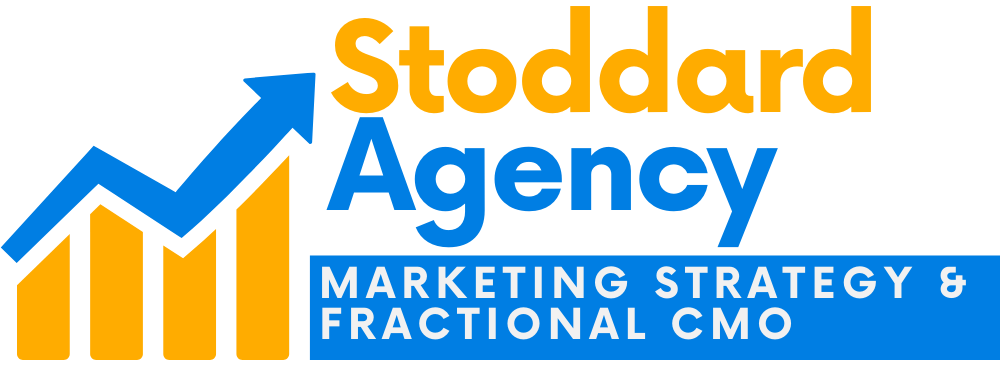Data-Driven People-Based Marketing
Personal injury leads from the internet are incredibly profitable if you do it right. One of the keys is that you need to make sure that you are getting to this lead before everybody else. There are a lot of ways to do that. You can actually find personal injury leads that are in-market based on their behavior on the internet. You could buy the data and create a closed-loop system with machine learning. If you can put your ad in front of those personal injury leads when they are just at the right stage in the buyer’s journey, then you’ve got a huge market advantage.

Hey guys, I am purposely making a terribly lit video, just got done with working on a client—personal injury attorneys. With the new InMarket personal injury leads program, we got eight leads in 10 days. Now, if you’re used to generating leads or buying leads, you’re probably used to all different levels of quality. So the close rate is the only thing that will really matter. However, there are some indicators. Are the leads responsive? Have they been sold to a whole bunch of other law firms? There’s always a junk lead, which is somebody that responds to something that they don’t even know what they were getting into. You know, like sweepstakes or something, right? There’s a lot of different ways that you might get an internet lead. Internet leads are incredibly profitable if you do it right.
One of the things that are key is that you need to make sure that you’re getting to this lead before everybody else. Especially if it has to do with an attorney, law firm marketing, or personal injury especially, auto accident, you have to be there first. I’m not talking about your phone call, I’m before that, before the lead line. Meaning the lead comes in and then you’re doing more of a sales process with your consultative phone calls selling. Before the lead line is when it’s still just floating around out there. It’s on the Internet. It’s somebody who’s looking at an ad or filling out a form or a quiz, and they’re interacting with some of the marketing material that you need to be in front of them early. That’s the game.
There’s a lot of ways to try to do that. Some are better than others. If you’re doing paid ads and
InMarket Leads Program: An Overview
Now there is such a thing as bots, and there’s such a thing as click fraud and all this other stuff that muddies the water. But if you’re tracking people that actually buy things, you get rid of bots because bots don’t buy things. So that’s number one. Some publishers purchase it, and it’s costly. Typically there are certain ways through different providers that you could potentially buy the data. By the way, if you’re interested in this, we do sell the data. I have access to this kind of data, and you can just go to stoddardagency.com and fill out the contact form or click the button about the In-market Leads Program. You learn all about it. So anyway, once you get this kind of data, then there are machine learning systems. There are a few companies out there, not very many that are developing methods to analyze the data and watch for purchase behavior, and creating behavioral profiles.
In other words, if somebody goes all the way to your website and they sign up with you to hire a personal injury attorney. We were to go back in time before that person actually submitted the form or made the phone call, they did certain things before they got to that point. Which then we can compare to other people. And the buyers tend to have buyer behavior. Only 3% of any given market is actually ready to buy now. 7% no, they don’t want to, they’re shopping, but they’re not 100% sure. They haven’t chosen, they’re still thinking about it. The other 90% is not even really in the market.
You’re looking for the needles in the haystack. So you can analyze this and create a closed-loop system with machine learning. We backtrack, and we think about what that we look at, not think about, at exactly what that person did. Which websites do they visit, what social media platforms, how many seconds of a video did they watch, and where? Track all that and you can actually find patterns. Then you can see that with statistical relevance, this person’s going to buy again. Or come back into the market for something. Or this other person looks is doing the same thing this other person does. We think they’re going to buy next.
Chances are you’re right, statistically. Here’s the key. If you can put your ad in front of those people when they’re just at the right stage in the buyers’ journey, from awareness all the way through to making a decision and justifying the decision, you’ve got a huge market advantage. I believe that all of your marketing needs to be focused on that. Even your brand building, if you’re going to do an intent-based brand building like this and you’re sharing content on the internet. Or if you’re doing the old school, broadcast media, or whatever. If you can find a way to put your ad in front of people, the right people that are in-market for what you sell, you can show the ad more often.
You can customize things. You can put your brand in front of them faster than your competitors, which means you control the conversation, you control the framing of it. You can influence buyer behavior. It’s a huge advantage. So if you don’t know about
So I got just starting a new client on this program, in about 10 days, we got eight leads, and these are people that were getting in front of before the competitors. So by definition if we close these, which were likely going to close several, at least, we are basically going to be stealing our competitor’s business, right?
Advantages of Using the InMarket Leads Program
So, in addition to that, we have a lower cost per click, lower cost per acquisition because they’re more relevant targeted ads to people that are going to click through at a higher rate. They are more likely to become customers versus your general pay-per-click marketing that everybody is doing on either Google AdWords or Facebook. These are the type of advantages I’m talking about now. If you want help with that by the way, and you want to explore this and see if it’s a good fit for your law firm, then contact me, go to stoddardagency.com and click on the link about InMarket Targeting, and we’ll get to you and help you with that. So once you have the concept of that down and you’re able to access some of the data, you can also create lookalike audiences.
Then you can leverage Google and Facebook because you can say, here’s an audience of people that we’ve shown across the Internet are likely to buy. Then we can put that, upload that to Facebook and Google and say, now create a lookalike audience on this. And we can leverage Facebook and Google’s technology to find people leaving more people that are very similar. They don’t give you that information. They don’t tell you by name. If you have a pixel, everybody’s got a pixel on their website, Pixel Facebook or you know, analytics and you’re doing retargeting. This is not retargeting. Well, it’s retargeting on steroids. You add retargeting to this, but Facebook and Google aren’t telling you by name who those people are. You just have to use it on their platform.
What I’m talking about is actually being able to identify them by name and take it into a different platform if you want. So if Google or Facebook changes the rules, you just pull out and put it somewhere else that we’re at where it does work. I get a question a lot of times, well, how does this happen? Is this legal? Yes, it’s entirely legal. It’s totally legit. It’s your purchase, this is data that’s purchased and then AI systems that are analyzing it. Machine learning. How does it work? Well, it’s complicated, but the brief version is, we have a particular pixel that’s put on a website, and also publishers site behind the firewall behind where people buy. Obviously, this is expensive. This is something you just can’t hack. This is proprietary stuff here and a pretty complicated system and a lot of negotiation.
And basically, the pixel places a cookie on the user’s website. Now if you use a pixel-like Facebook or Google, those have a time limit. They’re going to run out usually 30 days. All somebody has to do is click clear cookies, and it’s gone, and you lose all that precious tracking that you’re doing. With this, it doesn’t work that way because it’s better than that. We have the cookie and then as soon as the person does anything with these publishers, we’re matching up name multiple email addresses. We’re matching up as much information. It’s all connected nowadays. We’ve got, name, address, phone number, everything, email, buying behavior obviously, but also credit scores and all that other stuff. It’s basically like a grid. Every time that cookie fires off we go, oh, okay.
Do we have this person in the system, no, gather the email and the information, and oh, they’re already in the system. Okay. They visited the website, they’re already there. They’re already in our system. And so it’s adding all that information up into that buyer profile and it becomes more powerful because it’s tracking all the URL, behavior, social media, behavior, everything. And it’s collecting it permanently. Forever. You can have it. Now there’s a lot of security, a protocol that needed to be followed. So if you’re worried about that, everything’s above board, everything’s legitimate. It’s all encrypted with what’s called a hash file. And the hash file is something just so that it’s not out there all over the place that can be uploaded to Google or whatever.
It’s basically encrypted technology. So we’ve got all of that covered. And that’s important. The point is though, is if you have a way of getting your advertisement in front of people before your competitors, it’s a huge advantage, and in-market targeting is a way to do it. So anyway, that’s a quick overview. It’s exciting. You got to understand that there’s this thing called the Internet of Things and there’s the Internet of Everything. It’s all of these sensors, I don’t know how many, millions it was, it might be like a billion, or there could be like a trillion or something, in the next decade or less that are coming online. I mean, everything from your refrigerator in your microwave, having sensors in it that are collecting data, home security systems, driverless cars, it’s all collecting information, and then it’s putting together on a network.
So it was only a matter of time before they did this with marketing. I would say at least 12, 24 months ahead of just about every other, every other company out there that’s trying to do this. So we’re ahead of the game. But it’s the future. It’s coming. I mean, you’re going to hear about this in a couple of years. You’re gonna hear about it all the time. However, if you get in early, you can have a competitive advantage over the competitors because you’ll have already saturated that market and grown in that market and made it stronger. Keep this in mind too. If you already have in-market leads going and you have the machine learning happening and studying your market, it’s getting smarter, more optimized.
The ads are becoming better. If a competitor comes in with trying to do even something remotely similar, you’re so far ahead, their systems behind, it’s kind of like a race that you’re like already a foot from the finish line, and they have to start at the beginning and try to work their way in. So the sooner you engage in this technology, the better. If you want help with any of this stuff, again, go to Stoddard Agency or instant message me. We’ll hook you up, we’ll get you the information at least so you can see if it makes sense for you and we’ll have a discovery call. Learn about your business and figure out, hey, does this make sense for me right now? Is this a good idea?
If you’re already advertising on the Internet though, if you’re doing any kind of pay per click, if you’re spending money on advertising, then you ought to be doing this. If you’re a small firm, you don’t really pay it. You’re only on referrals right now, and you’re just getting started. Maybe not yet. I don’t know. Possibly could give you a jumpstart, but as a law firm grows their diversification and marketing has to happen for them to get enough lead flow. Typically most of the bigger guys, if you’re over a couple million a year, usually it’s like three to 5% of your business comes from referrals. Now that’s something that I know someone’s going to go and argue with me about. But if you look at your numbers, it’s not as many as you think.
Referrals are fantastic, but how do you get referrals in the first place? You have to get out there in front of people that are in-market and then ask them who they know and then hope. Then if they know anybody who just got in a car accident, they refer it. But that’s the in-market people. People that buy 100% of your business come from people that are in-market for what you sell. If you add to that that they are a referral, then great. It’s more powerful that way. But if they’re not in-market, they’re not in-market. So anyway, I hope you enjoy that. Have a great day, guys. Talk to you next time.





